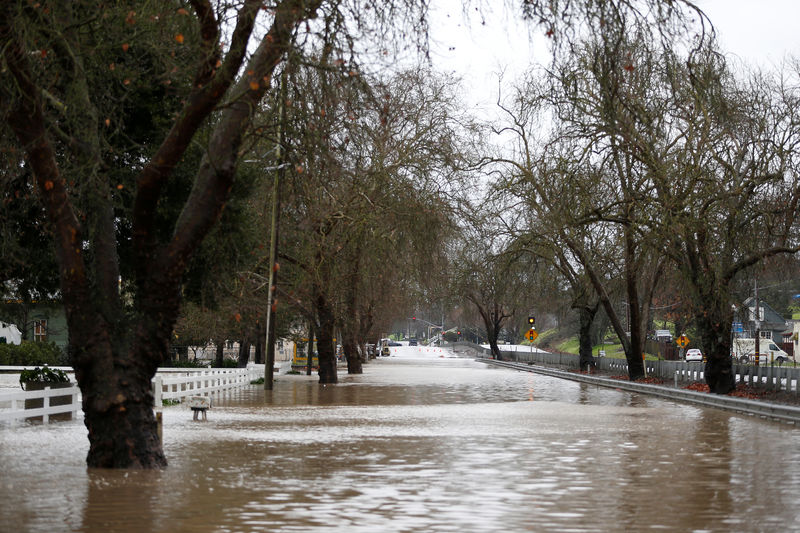* NZ battered by ex-Cyclone Debbie, highways closed
* Storm hits areas recovering from November quake
* Still 20,000 homes without power in Australia
* Australian storm death toll six (Updates with NZ roads closed, landslip, Australian toll)
By Jane Wardell
WELLINGTON, April 4 (Reuters) - The tail-end of powerful Cyclone Debbie, which left a trail of destruction in northeast Australia, lashed New Zealand on Tuesday, closing highways and causing a major landslip.
The storm hit parts of New Zealand still recovering from a devastating earthquake last November and the New Zealand Met office warned of several days of heavy rain, with some regions set to receive a month's worth of rain in the next 24 hours.
"This is a significant amount of rain and people are advised to watch out for rapidly rising rivers and streams, flooding and slips," the Met Office said in a severe weather warning.
Cyclone Debbie, a category four storm, one short of the most powerful level five, pounded Australia's Queensland state last week, smashing tourist resorts, bringing down power lines and shutting down coal mines. police on Tuesday recovered three bodies from a car beneath floodwaters in the swollen Tweed River of New South Wales state, bringing to six the number of people killed since the storm hit.
New Zealand's mountainous terrain makes its roads susceptible to landslides and many regions are still recovering from a 7.8 magnitude quake that struck in November, causing substantial damage to infrastructure.
The highway into Kaikoura, the epicentre of the quake, was closed on Tuesday, just hours after reopening following a week-long closure to shore up almost 20 potential slip sites. A second major arterial road was blocked by a landslip.
New Zealand's Civil Defence Force was on standby as other roads were also closed and at least one school was evacuated amid early flooding.
In Australia, where the disaster zone stretched 1,000 km (600 miles) from Queensland state's tropical resort islands and Gold Coast tourist strip to the farmlands of New South Wales state, around 20,000 homes were still without power on Tuesday as flood waters continued to rise in some areas.
Residents of Rockhampton, in central Queensland, were advised to seek higher ground as the rising Fitzroy River approaches a peak forecast for Thursday. Many tied boats to their fenceposts and spent Monday building a temporary levee to protect the city's north.
The Insurance Council of Australia has declared the event a catastrophe, which could cost hundreds of millions of dollars in losses, and state officials have warned recovery and repairs will take months.
